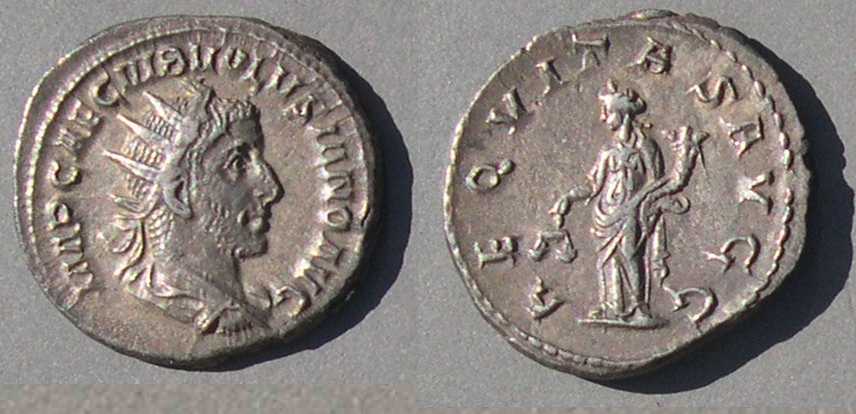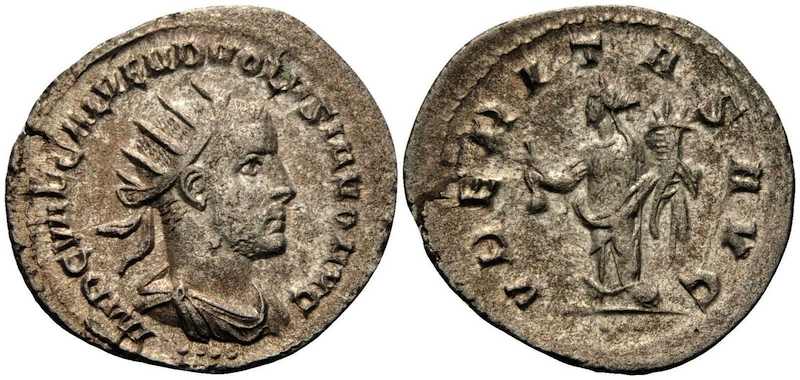What was Volusian's name?
Volusian was Augustus under his father, the Roman emperor Trebonianus Gallus, 251-253 AD.
We call him "Volusian" or "Volusianus," but his full name was longer than that. Coins from the Rome mint tell us more.
What's new? 2023, Jan. 18. A Syrian tetradrachm.
 Volusian, 251-253
Volusian, 251-253
22 mm. 4.26 grams. 6:30 die axis.
RIC 166, page 178
Sear III 9739
IMP CAE C VIB VOLUSIANO AVG
which tells us his name included "C. Vibius Volusianus".
"Vibius" is fully spelled out on some coins of Trebonianus Gallus, his father. ("C" is the Roman abbreviation for "Caius".)
Reverse: AEQVITAS AVGG, Aequitus (fair-dealing) standing left, holding scales and cornucopiae
But, that's not all. This next coin from the mint of Antioch is more complex:
 Volusian, 251-251
Volusian, 251-251
23-22 mm. 4.05 grams. 6;00 die axis.
RIC 237b, page 186 (under Treboninianus Gallus)
Sear 9772
IMP C V AF GAL VEND VOLUSIANO AVG
which RIC IV [page 158 in part 3] thinks might abbreviate
C. V[ibius] Af[inius] Gal[lus] Vend[umnianus] Volusiano Aug[ustus]
I suppose the name "Vendumnianus" is attested elsewhere (It is not the expansion of VEND that leaps to mind!)
Four dots below the bust and reverse figure = officina 4.
VBERITAS AVG, Uberitas (Fertility) standing left, holding purse and cornucopia.
Note for collectors: The Rome varieties with the first legend above are common. This legend from Antioch is unusual. Nevertheless, Sear (Roman Coins and their Values, volume 3) does not list it as more valuable, although all types from Antioch are much rarer than types from Rome.
The last issue of Syrian tetradrachms for Trebonianus Gallus (251-253) included Volusian. Syrian tetradrachms were not minted for the next emperors Aemilian or Valerian, or for any later rulers.
 Volusian, 251-253
Volusian, 251-253
Tetradrachm of Antioch. 26 mm. 13.00 grams.
Radiate bust right, draped and cuirassed.
AYTOK K Γ AΦIN ΓAL OYEN OYOΛOYCCIANOC CEB
Autoc[rator] C[aesar] G[aius] Afin[ius] Gal[lus] Ven[dumnianus] Volusianos Seb[astos] [i.e. Augustus]
(In their spelling, "OY" is our "U" or "V".)
Eagle standing left, head right, wreath in beak.
A between legs. SC in exergue
ΔHMARX EZOYCIAC
(Tribunica Potestate)
Prier 694, page 83 (12 examples).
Return to the main Table of Contents page.
 Volusian, 251-253
Volusian, 251-253 Volusian, 251-251
Volusian, 251-251 Volusian, 251-253
Volusian, 251-253